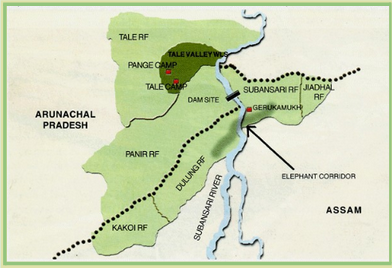News Excerpt:
A forest-dwelling horned frog from Northeast India has been described as a distinct species named Xenophrys apatani after the Apatani community of the region in recognition of their ingenuity in the conservation of wild flora and fauna.

Species Characteristics:
- Belongs to the genus Xenophrys
- Dark brown in colour featuring small horns.
- Leaf-litter dwelling frog, often found among tea leaves
Distinction from Vietnamese species:
- First, reported from Arunachal Pradesh in 2019, it was confused with the Maoson horned frog of Vietnam.
- Researchers mistakenly overlooked the significant geographical barrier of 1,600 kilometers separating Vietnam and Arunachal Pradesh.
- The frog species in Arunachal Pradesh exhibited a genetic disparity of 4.4% to 5.5% compared to its counterpart in Vietnam.
- Geographical distance and a 1% genetic divergence can also warrant further examination to determine if a new species is present.
Habitat and Distribution:
- Endemic to Arunachal Pradesh, India
- Currently found in the Tale Wildlife Sanctuary which is part of the Eastern Himalayas and Indo-Burma biodiversity hotspots.
- Likely has a limited geographical range, though further studies are needed to determine its exact distribution.
Conservation Status:
- Currently considered safe due to its location within a protected area.
- Further research is needed to understand its population size and specific habitat requirements
|
Apatani tribe
|
|
Tale Wildlife Sanctuary:
Location: Situated in Arunachal Pradesh, 10 km northeast of Hapoli town, Tale Wildlife Sanctuary encompasses 337 sq. km area. It was established in 1995. Geography: Dramatic landscapes define the sanctuary. Densely forested mountains ranging from 2,000 to 4,000 meters surround the area, with the Subansiri, Sipu, and Pange rivers carving their paths through the valleys. This untouched wilderness boasts pristine climax vegetation, a haven for rare animals. Wildlife: Tale Sanctuary is a paradise for wildlife enthusiasts.
|



